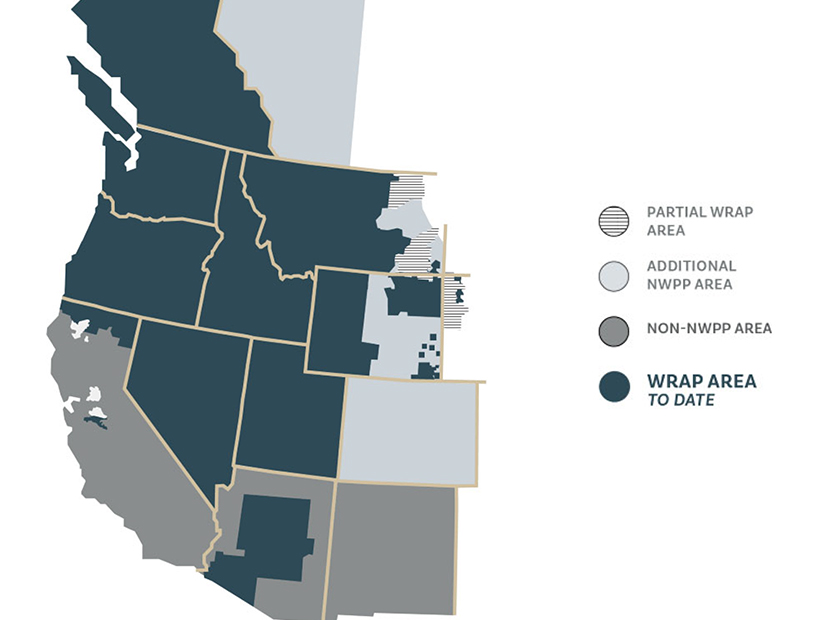The Northwest Power Pool (NWPP) last week took its first steps in implementing its Western Resource Adequacy Program (WRAP), opening the door for participants to submit resource data for a “nonbinding” phase of the capacity market, which the organization says will serve as a “beta test” for a final program design.
The data from the 26 “Stage 1” participants are needed to model “forward showings” of resource adequacy and availability for the WRAP’s winter 2022 season commencing next November. In the future, participants will be required to provide their forward showings seven months in advance of the summer (June-September) and winter (November-March) compliance periods.
NWPP developed the WRAP to help Western balancing authorities cope with potential generation shortages during critical hours as the region confronts the retirement of increasing numbers of thermal generators and its growing reliance on variable renewable resources such as wind and solar.
The WRAP is intended to increase visibility into existing RA conditions in the West, addressing concerns among industry stakeholders and state regulators that load-serving entities are unknowingly relying on the same capacity resources without realizing it, threatening system reliability during periods of scarcity. The program is designed to provide participants a framework in which to access capacity resources when a participant is experiencing an extreme event.
“An extreme event could be when a participant’s load is in excess of their [forward showing] forecast or resources (generation and transmission) are experiencing unexpected outages; this portion of the program unlocks the footprint’s load and resource diversity,” NWPP explained in a “detailed design” document released last July. “The program seeks to achieve a balance between planning in a reasonably conservative manner but also to provide flexibility in order to protect customers from unreasonable costs.”
In developing the WRAP, NWPP distinguished among various forms of RA — such as flexibility, energy and capacity — and decided to initially focus on a capacity-based program “with a demonstration of [resource] deliverability.”
The WRAP will kick off next winter with a nonbinding, no-penalty phase, denoted as Stage 1 in the NWPP timeline. The absence of enforcement and penalties shields the program from FERC oversight, giving members additional time to iron out wrinkles and finalize its design.
The binding Stage 2 program will introduce a requirement that participants demonstrate to the RA program administrator that they have sufficient resources to meet required metrics for a compliance season seven months ahead of the operational timeline or face a penalty based on the cost of new gas peaking plant.
The 26 Stage 1 participants represent more than 65,000 MW of winter peak load and nearly 67,000 MW of summer peak load within the Western Interconnection.
“This group is diving into the remaining program design questions, including a task force dedicated to a second transmission hub that would allow participants in the southwest region to more readily access program diversity; one considering specific contract terms that would be necessary to ensure an enhanced WSPP Schedule C agreement would count as qualified capacity; and others considering other outstanding issues,” NWPP said in a statement last week.
“We are very excited about the interest and commitment to the WRAP we’ve seen from former NWPP members and new participants alike. The level of excitement for the program’s forward program speaks to the determination and dedication of the participants,” NWPP CEO Frank Afranji said.
NWPP also noted last week that the move to implement the WRAP officially kicks off its working relationship with SPP, which has been retained to administer the program. (See SPP to Operation NWPP’s Resource Adequacy Program.)
“SPP has begun providing program operation services, including facilitating the collection of participants’ data to perform modeling for the upcoming seasons,” NWPP said.
“As we reach this significant milestone in the WRAP’s implementation, SPP is grateful for the relationships we’ve built and the opportunity to work with such a collaborative and diverse group of entities,” SPP CEO Barbara Sugg said. “This resource adequacy program will play an important part in the reliability of the Western grid, and it’s exciting to see new participants joining the effort.”
WRAP Stage 1 participants include Arizona Public Service, Avangrid, Avista, Black Hills Energy, Basin Electric Power Cooperative, Bonneville Power Administration, Calpine, Chelan PUD, Clatskanie PUD, Douglas PUD, Eugene Water and Electric Board, Grant PUD, Idaho Power, NorthWestern Energy, NV Energy, PacifiCorp, Portland General Electric, Powerex, Puget Sound Energy, Seattle City Light, Snohomish PUD, Shell Energy, Salt River Project, Tacoma Power, Turlock Irrigation District and The Energy Authority, which is representing seven Washington and Oregon publicly owned utilities.



